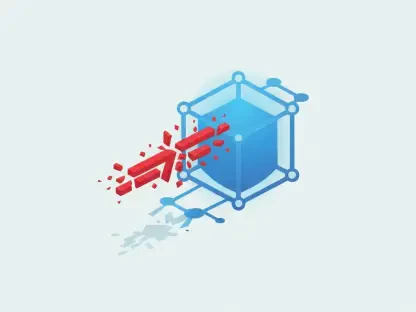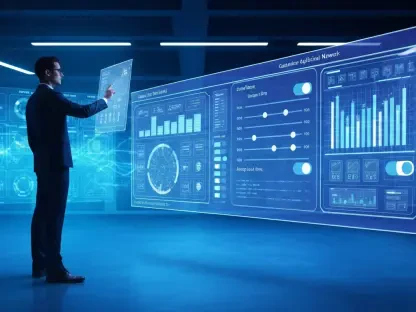Artificial intelligence (AI) is rapidly transforming biomedical text mining, particularly within the dynamic landscape of China. The surge in AI capabilities is driving advancements in extracting, normalizing, and analyzing biomedical information from diverse sources, enhancing both research and clinical decision-making. As healthcare data becomes increasingly digital, the integration of AI is proving critical for efficiently processing vast amounts of medical texts, which include electronic health records (EHRs), clinical notes, radiology reports, and medical literature.
The Rise of Named Entity Recognition (NER)
Named entity recognition (NER) is a cornerstone of biomedical text mining, focusing on identifying and classifying entities such as symptoms, diseases, and treatments. Events like the China Conference on Knowledge Graph and Semantic Computing (CCKS) have consistently emphasized NER tasks, showcasing how AI models are improving the precision and diversity of extracted entities. The automation of entity extraction from unstructured text helps in quickly identifying key medical concepts and facilitates further analysis.
In-depth exploration of NER tasks demonstrates ongoing advancements. CCKS has varied entity types annually, reflecting real-world complexities in electronic medical records. These variations highlight the dynamic nature of biomedical text mining and the continuous effort to refine AI models for better NER outcomes. For instance, datasets have evolved to include different entity types such as symptoms, anatomical sites, and treatments, tailored to specific medical domains. As a result, AI systems are effectively trained to handle the specificities of diverse medical contexts, leading to improved text mining capabilities.
Expanding Beyond NER: Entity Normalization
After recognizing entities, entity normalization maps them to standardized terminologies, ensuring uniformity across datasets. China Health Information Processing (CHIP) has spearheaded numerous tasks involving normalization, focusing on terminologies like ICD-10 and UMLS, essential for improving interoperability in medical data. This process is vital for converting varied medical terminologies into a consistent format, allowing different systems to understand and utilize the information cohesively.
Entity normalization facilitates better data sharing and integration, crucial for robust clinical and research applications. The consistency achieved through standardized terminologies enhances data quality and supports more accurate and comprehensive analyses. This standardization also aids in reducing ambiguities associated with differing local terminologies, ensuring that data from different sources can be effectively merged and compared.
Event Extraction and Its Impact
Event extraction captures specific occurrences within texts, vital for understanding biomedical information’s context and dynamics. CHIP has led significant explorations in event extraction, focusing on attributes from radiology reports and medical histories, contributing to more detailed and actionable insights. For instance, identifying attributes like tumor size or primary tumor site from radiology reports can be crucial for patient diagnosis and treatment planning.
Identifying attributes such as tumor size or medical history elements enhances the granularity of biomedical data. This granularity aids in developing detailed clinical models and improving individualized patient care and outcomes. Event extraction thus serves as a critical tool for clinicians and researchers, enabling the precise tracking of disease progression and treatment response.
Revolutionizing Relationship Extraction
Relationship extraction identifies and establishes connections between entities, crucial for understanding complex biomedical interactions. Recent CHIP challenges have advanced relationship extraction, exploring medical causal inferences and broader relationship types within texts. Establishing these relationships is fundamental to building comprehensive knowledge graphs that represent intricate biomedical data structures.
By accurately identifying relationships, AI aids in uncovering deeper insights into disease mechanisms, treatment effects, and patient outcomes. These relationships form the basis of knowledge graphs and other integrative frameworks essential for modern biomedical research. Consequently, advanced AI models in relationship extraction play a pivotal role in enhancing our understanding of complex biomedical phenomena and facilitating sophisticated data integration efforts.
Optical Character Recognition (OCR) in the Biomedical Field
OCR converts printed or handwritten medical documents into machine-readable text, crucial for digitizing paper-based records. CHIP’s initiatives in OCR, focusing on scanned medical records and drug package inserts, significantly contribute to data accessibility and analysis. Converting paper records into digital text ensures that valuable historical medical data can be utilized in current digital systems.
Efficient OCR processes enable the use of historical and non-digital records in modern analyses, enhancing data richness and availability. This digitization is crucial for comprehensive data mining and subsequent AI applications in healthcare. Additionally, OCR technology helps maintain the integrity of medical records, reduces data entry errors, and allows for the seamless integration of old and new medical information systems.
Comprehensive Information Extraction Tasks
Some challenges encompass various subtasks, highlighting the complexity and integrative nature of biomedical text mining. Tasks such as CHIP’s gene-disease association extraction and medical decision tree construction exemplify this trend, requiring multi-faceted AI solutions. Tackling these comprehensive tasks demands an advanced understanding of biological concepts and the ability to interrelate them accurately.
These comprehensive tasks demonstrate AI’s capability to handle complex, multi-dimensional data extraction, supporting sophisticated analytical models. Such advancements pave the way for more holistic and nuanced biomedical insights. The ability to extract and interconnect diverse types of information from complex texts is crucial for creating well-rounded datasets that enhance the scope and depth of biomedical research.
Data Sources and Collaborative Efforts
Biomedical text mining relies on diverse data sources, from electronic health records (EHRs) to published literature. Community challenges underscore collaborative efforts between academia and industry, driving forward AI’s application in biomedical contexts. Partnerships between these entities ensure that the developed solutions are both scientifically robust and practically viable.
The variety of data sources enriches the scope of mined information, fostering more robust and comprehensive datasets. Collaboration ensures that AI solutions are both innovative and applicable in real-world medical settings. By pooling resources and expertise, these partnerships help accelerate advancements in biomedical text mining, ultimately leading to improved healthcare outcomes.
Shaping the Future with Large Language Models (LLMs)
Artificial intelligence (AI) is revolutionizing the field of biomedical text mining in China, ushering in significant advancements in data extraction, normalization, and analysis. The rapid growth in AI technology is playing a pivotal role in enhancing both research and clinical decision-making by processing vast quantities of medical information from numerous sources. As healthcare data becomes more digitized, AI integration is essential for efficiently handling extensive biomedical texts, such as electronic health records (EHRs), clinical notes, radiology reports, and medical literature.
The impact of AI in this field cannot be understated. By automating the extraction of relevant information, AI tools can sift through millions of records swiftly, identifying patterns and insights that would be nearly impossible for humans to detect manually. This process not only accelerates the pace of medical research but also improves the accuracy and efficiency of clinical diagnoses and treatments.
Moreover, AI’s ability to standardize and normalize data across different formats ensures compatibility and usability, which is crucial for comprehensive data analysis. In China, where healthcare systems are vast and varied, such capabilities are indispensable for creating cohesive and actionable medical insights. AI-driven biomedical text mining is not just a technological advancement; it embodies a transformative approach that brings precision and innovation to the forefront of healthcare, ultimately benefiting both practitioners and patients.









